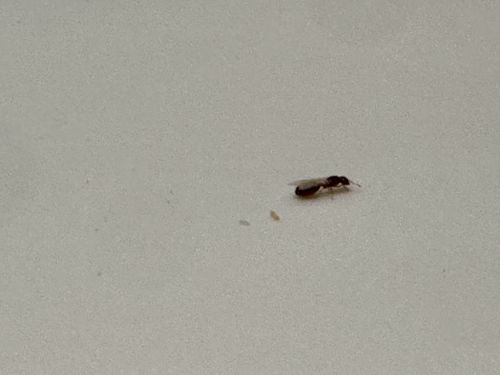Winged Ant (Alate)
Scientific Name: Various species within Formicidae (A specific scientific name cannot be determined solely from this image of a winged ant, as many species have winged forms for reproduction).
Order & Family: Order: Hymenoptera, Family: Formicidae
Size: Winged ants vary in size depending on the species and caste. They can range from a few millimeters to over an inch (e.g., Lasius niger can be 4-6mm; Camponotus species can be 6-12mm or larger).

Natural Habitat
Ants are found almost everywhere on Earth, except Antarctica and a few remote islands. They build nests in a wide variety of places including underground, in wood (e.g., stumps, fallen logs, or within house structures), under rocks, or within plant cavities.
Diet & Feeding
Ants have diverse diets, depending on the species. Many are omnivores, feeding on sugary substances like honeydew from aphids, nectar, fruits, and also protein sources like other insects (dead or alive), seeds, and fungi.
Behavior Patterns
Winged ants (alates) emerge from nests to mate. This typically occurs in swarms, especially on warm, humid days after rain. After mating, the female queen sheds her wings and seeks a suitable location to establish a new colony, while the males typically die. Workers forage for food and tend to the queen and larvae.
Risks & Benefits
Risks: Some ant species can be nuisance pests, infesting homes and food sources. A few species (e.g., fire ants, carpenter ants) can deliver painful stings or cause structural damage to wooden buildings. Benefits: Ants play important ecological roles as predators (controlling other insect populations), decomposers, seed dispersers, and soil aerators.
Identified on: 8/9/2025